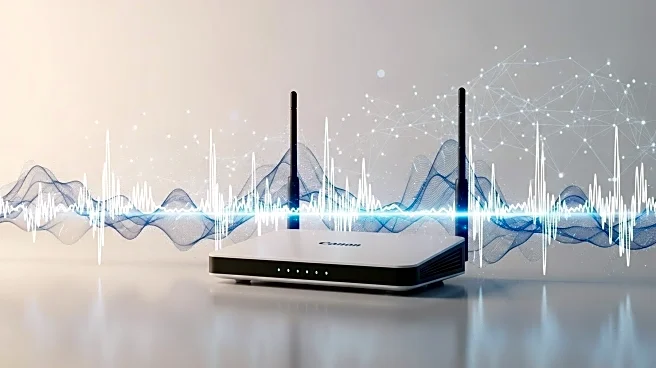What is the story about?
What's Happening?
EchoStar has sold AWS-4 and H-block spectrum to SpaceX for $17 billion, marking a significant shift in its business strategy. This sale follows a previous deal where EchoStar sold 600MHz and 3.45GHz licenses to AT&T for $23 billion. The company had initially planned to build a fourth US mobile network using open radio access network (RAN) technology, but this project will now be decommissioned. EchoStar's CEO, Hamid Akhavan, described the move as a 'forced pivot' due to regulatory pressures from the FCC. EchoStar's share price has surged, reflecting investor confidence in the company's strategic shift.
Why It's Important?
The sale of spectrum to SpaceX and AT&T represents a major realignment in the telecommunications industry, potentially affecting competition and market dynamics. EchoStar's decision to abandon its open RAN project could impact the development and adoption of this technology in the US. The influx of cash from these sales positions EchoStar as an 'asset-light growth company,' potentially influencing its future business ventures. SpaceX's acquisition of spectrum may enhance its satellite communications capabilities, posing challenges to competitors in the satellite industry.
What's Next?
EchoStar plans to sell additional spectrum, including 45MHz in the 700MHz, AWS-3, and CBRS bands. Potential buyers could include major telecom companies like Verizon. SpaceX's acquisition of spectrum may accelerate its satellite deployment and expand its market presence. EchoStar's strategic pivot may lead to new partnerships and business models, leveraging its remaining spectrum assets.
Beyond the Headlines
EchoStar's strategic shift highlights the complexities of spectrum management and regulatory challenges in the US. The company's ability to 'squat' on spectrum raises questions about market practices and regulatory oversight. The decommissioning of the open RAN project may slow innovation in network technology, affecting long-term industry trends.
AI Generated Content
Do you find this article useful?














